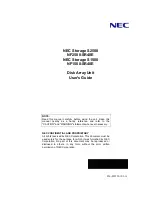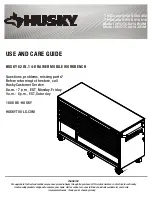
Galaxy
®
GHDX2-ADA DICOM Storage and Archive Appliance Admin Guide
66
Appendix A: Glossary
Accession number
A unique ID or job number that is generated by the hospital RIS and used for tracking each
exam and its corresponding patient name, date, and exam type.
AE title
Application Entity title of a DICOM station. This is a unique identifier within the network,
assigned to the station.
Archive volume
Each Archive Server is made of many large chunks of data, or areas of storage on a hard
disk or disks, referred to as archive volumes. Archive volumes are file paths on the Archive
Server. The DICOM Appliance stores incoming studies to the configured archive volume on
the Archive Server.
DICOM
Digital Imaging and Communications in Medicine (DICOM) is a standard for handling,
storing, printing, and transmitting information in medical imaging. It includes a file format
definition and a network communications protocol. The communication protocol is an
application protocol that uses TCP/IP to communicate between systems. DICOM files can be
exchanged between two entities that are capable of receiving image and patient data in
DICOM format. The National Electrical Manufacturers Association (NEMA) holds the
copyright to this standard [1]. It was developed by the DICOM Standards Committee,
whose members are also partly members of NEMA. DICOM enables the integration of
scanners, servers, workstations, printers, and network hardware from multiple
manufacturers into a picture archiving and communication system. The different devices
come with DICOM conformance statements which clearly state the DICOM classes they
support.
Entity
Comprised of up to three smaller hospitals or clinics collaborating within a single PACS
infrastructure.
Host name
The host name is a common alphanumeric alias for the IP address of a station.
HIS
A hospital information system (HIS), variously also called clinical information system (CIS)
is a comprehensive, integrated information system designed to manage the administrative,
financial and clinical aspects of a hospital. This encompasses paper-based information
processing as well as data processing machines.
HL7
HL7 and its members provide a framework (and related standards) for the exchange,
integration, sharing and retrieval of electronic health information. The standards, which
support clinical practice and the management, delivery, and evaluation of health services,
are the most commonly used in the world.
IHE
Integrating the Healthcare Enterprise is an initiative by healthcare professionals and
industry to improve the way computer systems in healthcare share information.
















































